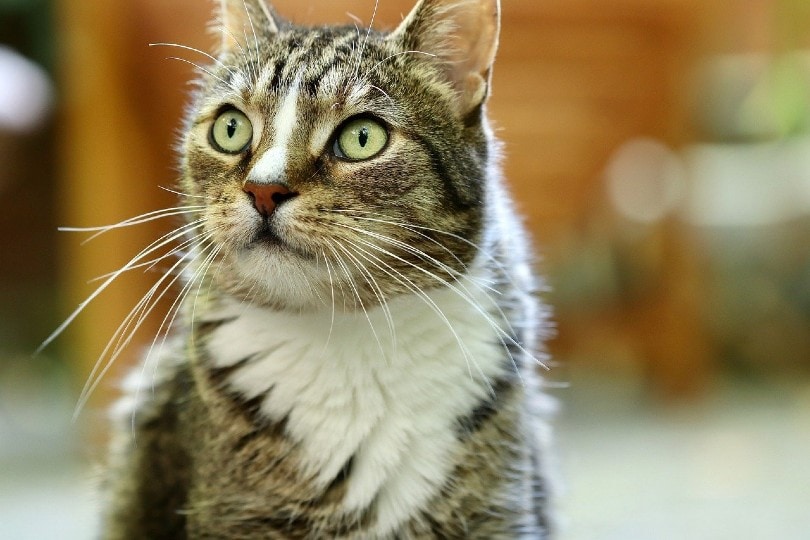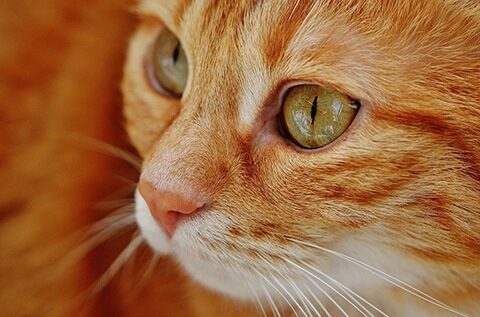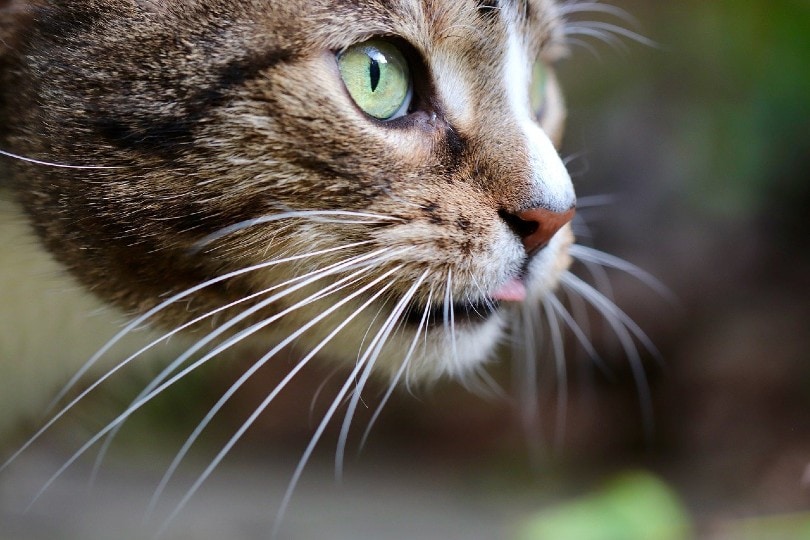Cat whiskers serve a much greater purpose than just making your feline friend look adorable. They act as a crucial sensory feature, relaying signals from the environment to your cat’s brain and nervous system. Due to their extreme sensitivity, some cats may dislike having their whiskers touched.
Interested in learning more? Read on to discover the fascinating world of cat whiskers and why they prefer not to be touched too much.
What Are Cat Whiskers? What Are They For?
Cat whiskers are similar to other types of hair, but they are thicker, longer, and coarser than the hair on their body. Additionally, their roots are three times deeper, making them much more sensitive than regular hairs. In fact, cat whiskers are as sensitive as human fingertips.
You may notice that your cat’s whiskers are strategically placed on their chin, forelegs, above the eyes, near the ears, and above the upper lip. Different cat breeds have varying arrangements, but many have 12 whiskers that are organized in four rows on their cheeks.
The location of the whiskers directly relates to their purpose. They are finely-tuned sensory devices that help a cat understand the world around them. When they feel air or an object against them, the delicate hairs vibrate and stimulate the nerves in the hair follicles.
Cats also use their whiskers to maintain their body balance. They have special sensory organs called proprioceptors located at the ends, which send messages to the brain to understand the orientation of the body and limbs.

Why Don’t Cats Like Their Whiskers Touched?
Naturally, with so much sensory information entering these hypersensitive hairs and organs, it can be overwhelming for a cat to have its whiskers touched.
Any time your cat is active, its whiskers are constantly taking in information. The only time they get a break is when the cat is resting. Cats also understand how important their whiskers are to their ability to navigate the world safely, so they are naturally protective of them.
When you are petting your cat, it is important not to pluck or pull on the whiskers. The root and nerves are so delicate that this can be much more painful than tugging on a hair. It is also crucial not to cut or trim the whiskers, as this can cause confusion and affect your cat’s awareness of its surroundings.
Some cats may tolerate gentle petting along the direction of the whisker, but not always. If your cat seems uncomfortable, it is best to avoid touching the whiskers altogether. Doing so may send unnecessary messages to its brain, which can be overwhelming.

What Is Whisker Fatigue?
Despite its name, whisker fatigue does not mean that a cat’s whiskers are tired. It actually refers to the stress caused by overuse. Often, whisker fatigue is caused by cats eating and drinking from bowls that are too small or have high sides, causing their whiskers to rub against them too much.
Depending on the severity, whisker fatigue can range from discomfort to pain, making the experience unpleasant for your cat.
Fortunately, whisker fatigue is easy to prevent by providing a flat surface or wide enough bowl for cat food and water that allows your cat to eat or drink without its whiskers touching the sides of the bowl. Many cats prefer to drink running water, such as from a faucet, for this reason.
Similarly, it is best to avoid touching your cat’s whiskers. Even if your cat tolerates it, touching its whiskers too much can cause a similar sensory overload.
